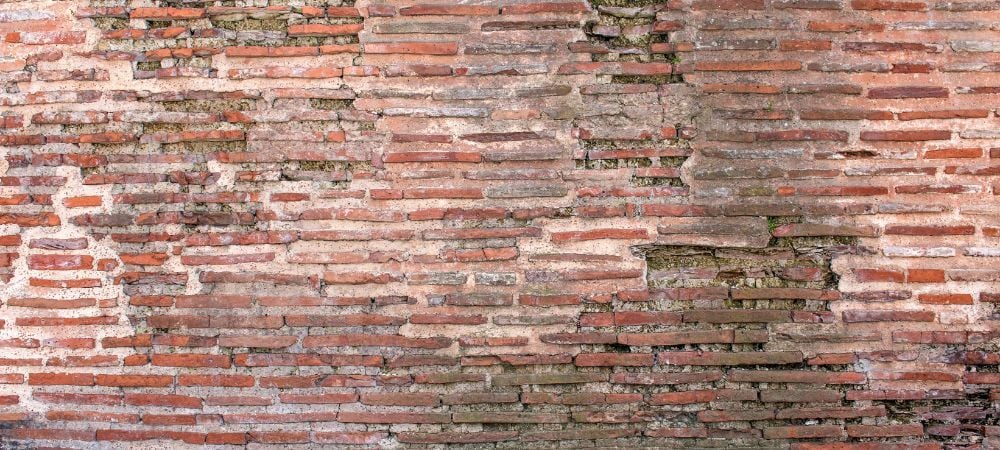How Do You Repair Loose Bricks?

Whether you have a brick-face home, a brick pathway, brick steps, or a brick wall, you want it to appear pleasing to the eye. Chipped and loose bricks can create a hazard and ruin the desirability and appearance of your home. As a homeowner, you don’t want to spend a small fortune on home improvement and keeping your home beautiful only to have a few bricks come loose. You also do not want to hire a contractor to fix it. So, what do you do?
Continue reading to see step-by-step how to repair loose bricks, broken bricks, retaining walls, and other types of damaged brick. After you learn how to do it, get some new bricks from Batchelder & Collins.
Common Types of Brick Damage
Bricks are one of the sturdiest building materials in history, as well as one of the oldest. They are designed to endure extremes of temperature and climate. Even the best structures, however, can sustain damage, and just like any building material, bricks age. Old bricks and old mortar are prone to weaknesses, and damaged bricks can result from many structural issues.
Cracked Brick
Cracked brick can be caused by many factors. Climate and weather can cause cracks in brick, which is porous and can soak up water, and create instability from freezing and re-thawing. Faulty mortar can have similar problems. Finally, changes in pressure due to loose or saturated soil can cause structures to shift, placing undue pressure on the bricks and causing them to crack.
Cracked or Loose Mortar
Existing mortar joints that grow weak with age can get loose or crack. The old mortar needs to be removed and replaced with new mortar, a process that is known as repointing brick. The amount of fresh mortar that needs to be applied depends on the severity of the damage, but replacing brick mortar is one of the most important upkeep processes to maintain the integrity and beauty of your brickwork.
Spalling
Spalling refers to situations where pieces of brick faces break off, usually due to moisture getting into the brick or mortar joints. It presents as flaking, crumbling, and even protruding bricks. Sometimes spalling bricks can be repaired, but more often, they need to be replaced entirely with replacement brick and new brick mortar, and the underlying cause of the spalling must be addressed to prevent reoccurrence.
Loose Bricks
Loose bricks occur when mortar joints surrounding the brick steps, retaining wall, or other structures lose their cohesion or begin to crumble from age, pressure, or environmental factors. Often, if the brick itself is undamaged, loose bricks can be repaired by repointing with new grout or brick repair mortar. If the brick is damaged, replacement bricks will be necessary.
What Are the Benefits of Fixing Loose Bricks?
Fixing loose bricks not only keeps your home beautiful but also protects your construction. Even a single loose, cracked, or damaged brick can affect the integrity of your structure. With walkways, this could just mean an unsightly crack. But when talking about brick steps or walls, on the other hand, structural issues could be dangerous to you, your loved ones, and your visitors.
Is It Possible to Fix Loose Bricks Without Removing Them?
When fixing loose bricks, the goal is to keep the brick intact. This is not always possible, however. Even if you do have to remove the brick, it is a good idea to keep it intact and handy if you can because it can be a challenge to find a precise match from a replacement brick.
Not all bricks are created equal, and as with any material, the color of a brick can fade with time. Swapping an old brick with a brand-new replacement brick can result in a noticeable color mismatch. You may also find that your existing bricks do not match the size of available replacements, requiring more extensive work to repair.
Can I Just Add Mortar to the Brick Without Doing Anything Extra?
The answer to this question, unfortunately, is no. Adding new mortar without removing a loose brick may seem like a fix, but it is short-term at best because it does not address the underlying problem that caused the brick to become loose in the first place. You can try silicone sealant or brick repair grout for a quick fix, but the best thing to do is completely replace the mortar surrounding the brick. Here is our step-by-step guide to fixing loose bricks.
Step One
The first step is to chisel out the existing mortar. When using a cold chisel for this purpose, be very careful not to damage the brick itself.
Step Two
Brush away any remaining debris using a stiff-bristled brush, wire brush, broom, or whisk. Clean both the area you will be refilling and the brick itself, and get both as smooth and clear as possible.
Step Three
Mix the mortar. Do not start working with mortar mix until the brick is completely out and the area is clean. If the brick is damaged beyond use, you may want to use a new brick, even though the new one likely will not match the original’s texture, coloring, or age.
Mixing mortar can be done with water from a garden hose. The goal is to achieve the correct consistency; wet mortar will run out and not cure properly, while dry mortar mix will not adhere well. The proper consistency is much like peanut butter. It is best to mix your mortar in small batches; you can always make more, but once it dries, it generally cannot be reconstituted.
Step Four
Use your brick trowel to put mortar inside the hole, spreading it all around all sides. Then, use the trowel to spread mortar onto the brick itself, also on all sides. Finally, push the brick back into the hole. Using a trowel or tuck-pointing tool, refill the joints with any excess mortar that pushes out by simply pushing it back in. Finally, use a jointer to smooth the new mortar joints.
Step Five
Next, use a soft-bristled brush to wipe away any excess mortar. A soft-bristled brush is important here because you want to avoid damaging the brick you just repaired.
Step Six
Mist the mortar to help it cure, and keep it covered while it seals. You may be able to apply a sealant when you are finished and the mortar is completely set up and dried, but this may not be necessary.
What to Use to Fix Loose Bricks
There is an old handyman saying about using the right tool for the right job. You will need various tools when fixing a loose brick. Gather the following list of tools. This list may be adjusted depending on the type of fixture you install.
- Flat utility chisel
- Hammer
- Mortar mix and replacement brick, if necessary
- Bucket
- Gloves and safety goggles
- Tuckpointing tool
- Brushes — stiff and soft-bristled
- Jointer
What to Do for Missing Bricks
If you have a brick pathway, wall, or brick steps with missing bricks, follow the steps above but use replacement brick instead of the original brick. Even in this case, chisel and brush out all excess old mortar before you begin.
What to Do With Excess Mortar
If you have leftover mortar, it cannot be saved and must be properly disposed of safely. Let the mortar dry completely, then break it into chunks. It can then be disposed of in the same fashion as any other construction debris.
Your Home Is One Loose Brick Away From Beautiful!
DIY home improvement can be tough and have a steep learning curve, but it can be satisfying when it goes well. Still, brickwork is a difficult task, and qualified masons or bricklayers are best suited to ensure the quality and integrity of your structure.
Whether you are doing it on your own and just need replacement bricks and mortar mix, or you want help from experienced professionals who can get the job done quickly and smoothly, Batchelder & Collins is here to help. Call us at 757-625-2506 , or contact us online for more information or to place an order today.
Enjoy Your Backyard All Fall Long

Now is the perfect time to take advantage of autumn’s mild days to prepare your backyard for the cold months ahead. But who’s to say you can’t still enjoy your backyard, spending time with your family, and cooking outdoors all fall long.
"*" indicates required fields




